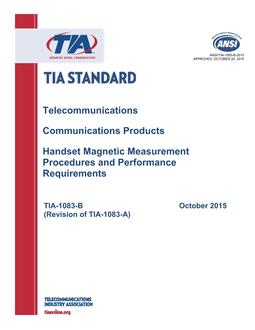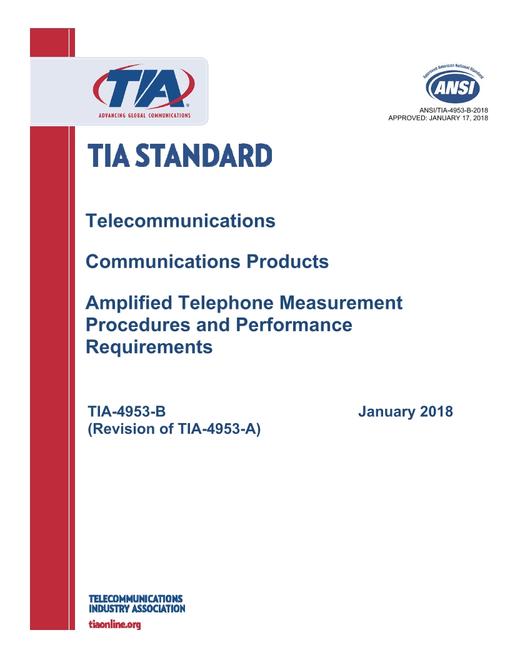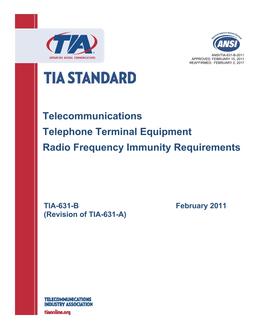-
-
Available Formats
- Availability
- Priced From ( in USD )
-
Available Formats
-
- Secure PDF 🔒
- Immediate download
-
$123.00Members pay $92.25
- Add to Cart
-
- Printed Edition
- Ships in 1-2 business days
-
$123.00Members pay $92.25
- Add to Cart
Customers Who Bought This Also Bought
-

TIA ANSI/TIA-1083-B
Priced From $123.00 -

TIA ANSI/TIA-4953-B
Priced From $141.00 -

TIA ANSI/TIA-631-B
Priced From $119.00 -

TIA ANSI/TIA-571-C
Priced From $109.00
About This Item
Full Description
This TIA Standard contains requirements necessary for the synchronization of TDM based PISNs. Timing within a digital private network needs to be controlled carefully to ensure that the rate of occurrences of slips between equipment within the PISN, and the public switched networks is sufficiently low not to affect unduly the performance of voice transmissions, or the accuracy or throughput (if errored data require re-transmission) of non-voice services. The clock accuracy classification considered in this standard is based on North American stratum levels.
Requirements are also based upon the interconnection of digital private telecommunication networks via digital facilities in the public (switched or packet) telecommunication networks.
Synchronization in packet based networks is based on time stamping or timing protocols like Network Time Protocol (NTP). At present, time stamping based synchronization is used in ATM networks. NTP is broadly used in the Internet to synchronize distributed clocks to each other or to time server having an accurate clock (e.g. a server connected to GPS receiver). In NTP based synchronization, clock offset and skew would be estimated based on one-way delay measurement across the network, the accuracy of synchronization depends on the network paths between two hosts. This TIA standard does not address the synchronization methods applicable to packet based networks.
This Standard is one of a series of technical standards on telecommunications networks and with its companion standards fills a recognized need in the telecommunications industry brought about by the increasing use of digital equipment and facilities in private networks. It is useful to anyone engaged in the manufacture of digital customer premises equipment (CPE) for private network applications, and to those purchasing, operating or applying digital CPE to digital facilities for PISNs.
This Standard establishes technical criteria necessary in the design of a synchronization plan for a PISN. Compliance with these requirements would be expected to result in a quality PISN synchronization design.





